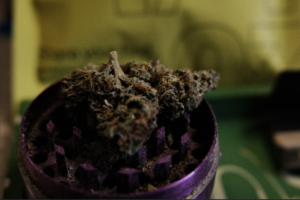The weekend is coming up. You sift through your closet and find you have nothing to wear out. You pull up your phone and Instagram shows you a beautiful model wearing a gorgeous black top, only $10 on Shein. That’s pretty cheap, and it arrives in a week. For something similar on Amazon, it takes only two days. You wear it, get some cute pics and toss it aside. Never to be worn again, it ultimately ends up in a landfill. Next week, the cycle continues.
It’s exciting. A lot of students in college do it, and the environmental and ethical concerns raise few eyebrows. This is the new reality of retail. This is fast fashion.
Dana Thomas, a writer for the Wall Street Journal, describes “fast fashion” as “trendy, inexpensive garments mass produced at lightning speed in subcontracted factories and hawked in thousands of chain stores world-wide.” With the pressure to keep up with trends and the marketing tactics used to encourage overconsumption, society has fallen victim to an unsustainable business model that raises serious environmental and ethical concerns.
The Boston Consulting Group has researched and reported that by 2030 the world will be buying 102 million tons of clothing. That’s not surprising, considering the amount of clothes Americans purchase today has already increased five times since 1980, and the need to keep up is unrealistically high. There used to be two fashion seasons, and now there’s 52.
These “micro seasons” serve as fast paced markers to trap shoppers in a never ending cycle of overconsumption, and this trend has disastrous consequences both environmentally and ethically. Every year, the $2.4 trillion textile industry accounts for almost 20% of all industry related water pollution. Additionally, 25% of chemicals used globally are dedicated to the fashion industry, and the overall carbon emissions it requires account for 10% of the world’s total. As if that’s not bad enough, one-fifth of all clothing produced is never even sold. These items are discarded, often burned, further contributing to the environmental destruction.
The environmental implications are not the only negative effects of fast fashion. In order to lower costs of production, companies move overseas to countries where they can exploit cheap labor and minimal oversight. “Between 2006 and 2012, more than 500 apparel workers died in Bangladesh in factory fires,” Thomas wrote. This highlights the unsafe conditions in which many underpaid workers suffer. Some argue the fashion industry has raised developing countries out of poverty, but looking closer reveals an unsettling truth. As discussed in the documentary “The True Cost,” only 2% of workers in the fashion industry earn a living wage. This is even more concerning considering the textile and apparel industry employs one-sixth of the world’s labor force.
It’s easy to blame the consumer when faced with these alarming statistics, but it’s not all the shoppers’ fault. Companies play a large role in advertising to consumers. In college, social media platforms such as Snapchat and Instagram are frequently used to exchange photos with peers. Brands utilize these sites through heavy advertising marketed to impressionable students, encouraging them to purchase their apparel in order to keep up with and impress one another at a lower immediate cost than what might be investing in long-term pieces.
While this all seems pretty dire and irreparable, there is hope. More and more people are becoming aware of the disastrous consequences of fast fashion and overconsumption. Consumers are beginning to demand transparency surrounding manufacturing practices.
Sites suchs as “good on you” allow consumers to research the sustainability and ethical practices of their favorite brands. The advocacy group Fashion Revolution defines the term ‘fashion transparency index’ as “a tool to push and incentivise the world’s largest fashion brands to be more transparent about social and environmental efforts.”
People are challenging the current system, and companies are beginning to take note. Many are adjusting to more ethical and sustainable practices, and companies like Patagonia and Reformation already prioritize sustainability efforts in their business models. Some companies are even challenging the idea of consumption as a whole, such as the online retail service “Rent the Runway” where customers pay a subscription fee to rent out luxury items each month. This new model has since been adopted by other high fashion brands such as the clothing retailer Vince.
Consumers can also make an impact on a local level. While Instagram is a platform often used by companies to advertise their fast fashion products, it is also seeing a growing presence of online thrifting and upcycling content creators. 20-year-old Sydney Olberding from Lewiston, Maine runs a thrifting and upcycling Instagram page. She thrifts regularly and shares her impressive finds with her 2,500 followers.
“Thrifting can be time consuming. Thrifting accounts, like my own, simplify the process for those who don’t have the same passion for the search but still want to shop sustainably and at affordable prices,” said Olberding when asked about the inspiration to begin her page. She’s sold over 650 items, and her efforts highlight the difference individuals can make in challenging the fast fashion narrative.
The University of Maine even offers resources to provide students with access to clothing. The Black Bear Exchange, as stated on UMaine’s website, “envisions a community where all those who work and attend the University of Maine have equitable access to resources; and where creative, situation-specific collaborations are actively nurtured to meet needs.” Students can also go thrifting in many stores located in the Bangor area, as well as find affordable, second-hand clothing at stores such as Goodwill.
Renting, upcycling and thrifting extend an opportunity for college students to challenge the current consumption practices, but they are not enough to change the college fashion culture and we must work further to change it. The practices of wearing outfits only for social media, overconsuming to keep up with trends and buying single use or occasion-specific clothing need to be retired for good.









